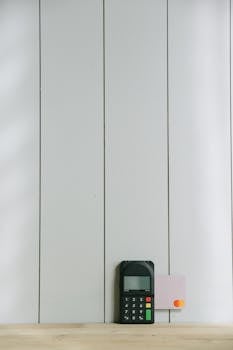“Empower Your Journey: Flexible and Portable Solar Mounting Solutions for Every Adventure.”
Solar mounting systems for mobile applications are designed to provide flexible and portable solutions for harnessing solar energy in various environments. These systems enable the installation of solar panels on vehicles, trailers, and other mobile platforms, allowing users to generate renewable energy on the go. With lightweight materials and innovative designs, mobile solar mounting systems can be easily deployed and reconfigured, making them ideal for outdoor activities, emergency response, and remote locations. Their adaptability ensures that users can efficiently capture solar power wherever they are, promoting sustainability and energy independence in a variety of applications.
Advantages of Flexible Solar Mounting Systems for Mobile Applications
In recent years, the demand for renewable energy solutions has surged, particularly in mobile applications where flexibility and portability are paramount. One of the most significant advancements in this field is the development of flexible solar mounting systems. These systems are designed to adapt to various mobile environments, making them ideal for applications ranging from recreational vehicles and boats to portable power stations and emergency response units. The advantages of these flexible solar mounting systems are numerous, and they play a crucial role in enhancing the efficiency and usability of solar energy in mobile contexts.
One of the primary benefits of flexible solar mounting systems is their lightweight design. Traditional solar mounting solutions can be cumbersome and heavy, which poses challenges for mobile applications where weight is a critical factor. In contrast, flexible systems are often constructed from lightweight materials that do not compromise structural integrity. This reduction in weight allows for easier installation and transportation, enabling users to maximize their energy generation capabilities without being burdened by excessive equipment.
Moreover, the adaptability of flexible solar mounting systems is another significant advantage. These systems can be easily adjusted to fit various surfaces and angles, ensuring optimal solar exposure regardless of the mobile application. For instance, when mounted on a recreational vehicle, the system can be configured to follow the sun’s path, maximizing energy capture throughout the day. This adaptability is particularly beneficial for users who frequently change locations, as it allows them to maintain efficient energy production without the need for extensive reconfiguration.
In addition to their lightweight and adaptable nature, flexible solar mounting systems also offer enhanced durability. Many of these systems are designed to withstand harsh environmental conditions, including high winds, heavy rain, and extreme temperatures. This resilience is crucial for mobile applications, where equipment is often exposed to the elements. By utilizing robust materials and innovative engineering techniques, flexible solar mounting systems can provide reliable performance over time, reducing the need for frequent maintenance or replacement.
Another noteworthy advantage is the ease of installation associated with flexible solar mounting systems. Unlike traditional mounting solutions that may require specialized tools and extensive labor, flexible systems can often be installed quickly and with minimal effort. This user-friendly approach is particularly appealing for individuals who may not have technical expertise or access to professional installation services. As a result, users can set up their solar systems independently, empowering them to harness solar energy whenever and wherever they need it.
Furthermore, the versatility of flexible solar mounting systems extends to their compatibility with various solar panel types. Users can select from a range of solar panels, including thin-film and rigid panels, depending on their specific energy needs and space constraints. This compatibility ensures that users can optimize their solar energy systems based on their unique requirements, further enhancing the overall efficiency of their mobile applications.
In conclusion, the advantages of flexible solar mounting systems for mobile applications are clear. Their lightweight design, adaptability, durability, ease of installation, and compatibility with various solar panel types make them an ideal choice for those seeking portable and efficient renewable energy solutions. As the demand for sustainable energy continues to grow, these innovative mounting systems will undoubtedly play a pivotal role in enabling users to harness the power of the sun, regardless of their location. By embracing these advancements, individuals and organizations can enjoy the benefits of solar energy while maintaining the flexibility and portability that modern mobile applications require.
Key Features of Portable Solar Mounting Solutions
Portable solar mounting solutions have emerged as a vital component in the realm of renewable energy, particularly for mobile applications. These systems are designed to provide flexibility and portability, catering to a variety of needs, from recreational vehicles and boats to temporary installations at events or construction sites. One of the key features of these portable solar mounting solutions is their lightweight construction. Manufacturers often utilize materials such as aluminum or high-strength composites, which not only reduce the overall weight of the system but also enhance its durability. This lightweight nature allows for easy transport and installation, making it an ideal choice for users who require mobility without sacrificing performance.
In addition to being lightweight, portable solar mounting systems are engineered for quick assembly and disassembly. Many designs incorporate modular components that can be easily connected or disconnected, allowing users to set up their solar arrays in a matter of minutes. This feature is particularly beneficial for those who frequently relocate their solar systems, as it minimizes downtime and maximizes energy generation. Furthermore, the intuitive design of these systems often means that no specialized tools are required for assembly, making them accessible to a broader range of users, from seasoned solar enthusiasts to newcomers.
Another significant aspect of portable solar mounting solutions is their adaptability to various surfaces and environments. Many systems come equipped with adjustable mounting brackets or feet, enabling users to secure their solar panels on uneven or sloped surfaces. This versatility is crucial for mobile applications, where the terrain can vary widely. Additionally, some portable mounts are designed to be used in conjunction with ground stakes or sandbags, providing extra stability in windy conditions. This adaptability ensures that users can harness solar energy effectively, regardless of their location.
Moreover, the design of portable solar mounting systems often incorporates features that enhance their performance in diverse weather conditions. For instance, some models include tilt adjustments, allowing users to optimize the angle of their solar panels for maximum sunlight exposure throughout the day. This capability is particularly important for mobile applications, where users may not have the luxury of positioning their panels in a fixed, optimal orientation. By allowing for tilt adjustments, these systems can significantly increase energy capture, making them more efficient and effective.
In addition to performance features, many portable solar mounting solutions prioritize user safety and security. Some systems include locking mechanisms or anti-theft designs, ensuring that solar panels remain securely in place during transport and use. This focus on security is essential for users who may leave their solar setups unattended, providing peace of mind that their investment is protected.
Finally, the integration of technology into portable solar mounting solutions is becoming increasingly common. Some systems now feature built-in monitoring capabilities, allowing users to track energy production and system performance in real-time. This technological advancement not only enhances user experience but also enables users to make informed decisions about their energy consumption and system maintenance.
In conclusion, portable solar mounting solutions are characterized by their lightweight construction, quick assembly, adaptability to various surfaces, performance optimization features, security measures, and technological integration. These key features collectively contribute to the flexibility and portability that make these systems indispensable for mobile applications. As the demand for renewable energy continues to grow, the evolution of portable solar mounting solutions will undoubtedly play a crucial role in facilitating the widespread adoption of solar technology in diverse settings.
Installation Tips for Mobile Solar Mounting Systems
When it comes to harnessing solar energy for mobile applications, the installation of solar mounting systems plays a crucial role in ensuring efficiency and effectiveness. These systems are designed to be flexible and portable, allowing users to adapt to various environments and conditions. To achieve optimal performance, it is essential to follow specific installation tips that cater to the unique demands of mobile solar setups.
First and foremost, selecting the right mounting system is vital. Mobile applications often require lightweight and compact solutions that can withstand the rigors of transportation. Therefore, consider using aluminum or high-strength plastic materials, which offer durability without adding excessive weight. Additionally, ensure that the mounting system is compatible with the solar panels you intend to use, as this compatibility will directly affect the overall performance and stability of the installation.
Once you have chosen an appropriate mounting system, the next step is to assess the installation site. Mobile solar systems can be deployed in various locations, from remote camping sites to urban environments. It is essential to evaluate the terrain and potential obstructions, such as trees or buildings, that may cast shadows on the solar panels. Ideally, the installation site should receive unobstructed sunlight for the majority of the day to maximize energy production. Furthermore, consider the angle of the solar panels; tilting them towards the sun can significantly enhance their efficiency.
After determining the optimal location, securing the mounting system is crucial. For mobile applications, it is important to ensure that the system can withstand movement and vibrations during transport. Using robust anchors or clamps can help stabilize the installation, preventing any shifting that could lead to damage. Additionally, if the system is intended for use on vehicles, it is advisable to use mounting solutions specifically designed for automotive applications, as these will provide the necessary stability and safety.
Another important aspect of installation is the wiring and electrical connections. Properly routing the wiring is essential to avoid damage during transport and to ensure a clean, organized setup. Use cable ties or conduits to secure the wiring and protect it from environmental factors. Moreover, consider incorporating quick-connect systems that allow for easy disconnection and reconnection of the solar panels, facilitating a more efficient setup and takedown process.
In addition to these practical considerations, it is also wise to think about the overall design and aesthetics of the installation. A well-designed mobile solar mounting system not only enhances functionality but also contributes to a visually appealing setup. This is particularly important for applications such as RVs or boats, where aesthetics can play a significant role in user satisfaction. Therefore, take the time to plan the layout and ensure that all components are neatly arranged.
Finally, regular maintenance is key to ensuring the longevity and efficiency of mobile solar mounting systems. Periodically check for any signs of wear or damage, and clean the solar panels to remove dirt and debris that may hinder performance. By following these installation tips, users can create a reliable and efficient mobile solar energy solution that meets their needs while providing the flexibility and portability that modern lifestyles demand. In conclusion, with careful planning and execution, mobile solar mounting systems can deliver exceptional performance, making them an invaluable asset for anyone looking to harness the power of the sun on the go.
Comparing Fixed vs. Portable Solar Mounting Systems for Mobility
When considering solar mounting systems for mobile applications, the choice between fixed and portable systems is crucial for optimizing energy generation while ensuring flexibility and ease of use. Fixed solar mounting systems are designed to remain stationary, providing a stable platform for solar panels. These systems are typically installed on rooftops or ground mounts, offering a reliable solution for permanent installations. However, their immobility can be a significant drawback for users who require adaptability, such as those in recreational vehicles, boats, or temporary setups for events and outdoor activities.
In contrast, portable solar mounting systems are engineered for mobility, allowing users to easily transport and deploy solar panels wherever needed. This flexibility is particularly advantageous for individuals who frequently change locations or require a temporary power source. Portable systems often feature lightweight materials and compact designs, making them easy to carry and set up. For instance, foldable solar panels can be quickly unfolded and positioned to capture sunlight, providing immediate access to renewable energy without the need for extensive installation processes.
One of the primary advantages of portable solar mounting systems is their versatility. Users can adjust the angle and orientation of the panels to maximize solar exposure throughout the day, which is a significant benefit over fixed systems that are limited to a single position. This adaptability allows for more efficient energy capture, especially in varying geographical locations or during different seasons. Moreover, portable systems can be used in conjunction with battery storage solutions, enabling users to store energy for later use, which is particularly useful in off-grid scenarios.
However, while portable systems offer significant benefits in terms of flexibility, they may not always provide the same level of durability and stability as fixed systems. Fixed mounts are typically designed to withstand harsh weather conditions and provide a robust foundation for solar panels. In contrast, portable systems may require careful handling and setup to ensure they remain secure during windy or inclement weather. Users must weigh the importance of mobility against the need for a stable and long-lasting installation, particularly in environments where weather conditions can be unpredictable.
Another consideration is the cost associated with each type of system. Fixed solar mounting systems often represent a larger upfront investment due to their permanent nature and the materials used in their construction. Conversely, portable systems can be more affordable, making them an attractive option for those who may not require a long-term installation. However, it is essential to consider the long-term value and energy output of each system, as a fixed installation may ultimately provide greater returns on investment through consistent energy generation.
In conclusion, the decision between fixed and portable solar mounting systems for mobile applications hinges on individual needs and circumstances. For those seeking a reliable, long-term energy solution, fixed systems may be the best choice. However, for users who prioritize flexibility and the ability to adapt to changing environments, portable systems offer an unparalleled advantage. Ultimately, understanding the specific requirements of your mobile application will guide you in selecting the most suitable solar mounting system, ensuring that you harness the power of the sun effectively and efficiently.
Q&A
1. **Question:** What are the key benefits of using solar mounting systems for mobile applications?
**Answer:** The key benefits include flexibility in installation, ease of transport, lightweight design, and the ability to adapt to various terrains and surfaces.
2. **Question:** How do solar mounting systems enhance portability for mobile applications?
**Answer:** They are designed to be compact and modular, allowing for quick assembly and disassembly, making them easy to move and set up in different locations.
3. **Question:** What materials are commonly used in solar mounting systems for mobile applications to ensure flexibility?
**Answer:** Common materials include aluminum for its lightweight properties, as well as high-strength plastics and composites that provide durability without adding significant weight.
4. **Question:** Can solar mounting systems for mobile applications be adjusted for different angles and orientations?
**Answer:** Yes, many systems feature adjustable brackets and mounts that allow users to change the angle and orientation to optimize solar exposure based on the sun’s position.
Conclusion
Solar mounting systems for mobile applications offer significant flexibility and portability, enabling users to harness solar energy in various locations and conditions. These systems are designed to be lightweight and easy to transport, allowing for quick setup and takedown. Their adaptability makes them suitable for a range of uses, from recreational vehicles and boats to temporary installations for events or emergency power needs. Overall, the integration of flexible and portable solar mounting solutions enhances the accessibility and practicality of solar energy, promoting its use in diverse mobile scenarios.




